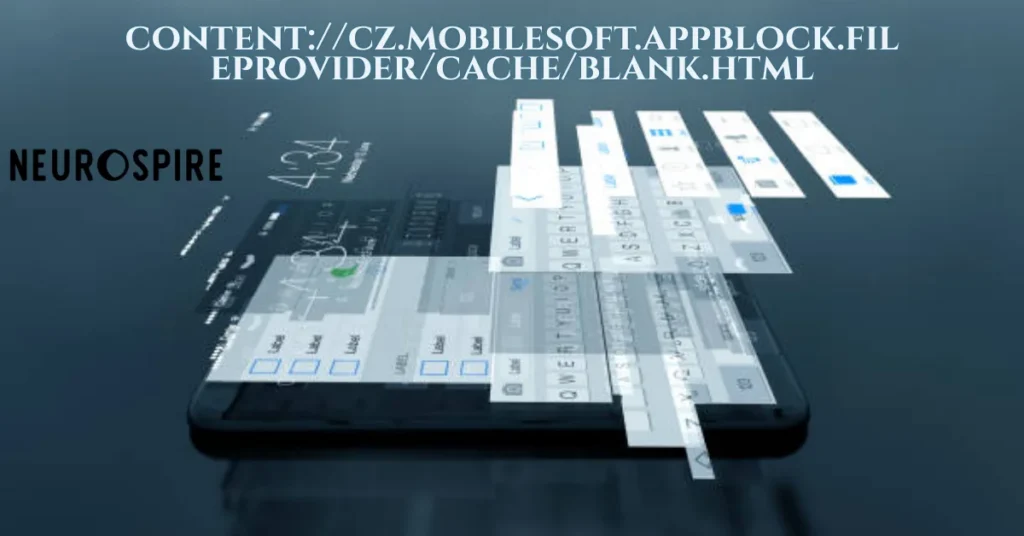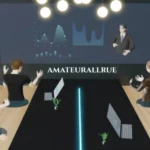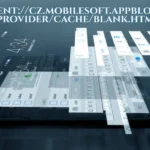The Invisible Layer Controlling Your Digital Self
Introduction:
Imagine walking into a room where every light, sound, and screen adapts to your unspoken preferences. Now imagine that same power, not in a room, but inside your phone—a silent curator, quietly redacting temptation, filtering distraction, and helping you focus without fanfare. You didn’t click “block,” but something did it for you. Welcome to the cryptic realm of content://cz.mobilesoft.appblock.fileprovider/cache/blank.html—a seemingly indecipherable string of characters that’s more than just a dead-end link. It’s a digital ghost. And it may be the quiet architect of your modern attention span.
At first glance, it resembles gibberish—a placeholder URL embedded in Android’s system. But like much in our tech-saturated lives, what appears meaningless often masks something deeper. This particular URI isn’t just a technical leftover; it’s the trailhead into a fascinating story of digital discipline, software censorship, and the growing movement to reclaim mental autonomy.
What is content://cz.mobilesoft.appblock.fileprovider/cache/blank.html?
At its core, this URI (Uniform Resource Identifier) is a content scheme used by Android systems. It’s not a traditional web URL. Instead, it’s a secure, internal pathway within a mobile device, particularly within apps like AppBlock, which help users control their screen time by blocking distracting apps or content.
Specifically:
content://is Android’s way of accessing shared data.cz.mobilesoft.appblock.fileproviderrefers to the AppBlock application, built by Czech developer MobileSoft./cache/blank.htmlis likely a local, cached HTML file—a blank screen—used as a stand-in for blocked content.
In simple terms, it’s the digital equivalent of a “do not disturb” sign, stealthily slipped over the window of your digital life.
Origins and Philosophy:
The idea behind such mechanisms stems from a broader digital well-being movement. In the early 2010s, as smartphones evolved from tools into full-fledged lifestyles, developers noticed a troubling pattern: increased anxiety, reduced focus, and what researcher Linda Stone coined as “continuous partial attention.”
AppBlock and others in the space (like Forest, Digital Wellbeing, and Freedom) emerged from the same philosophical soil: tech should serve human flourishing—not fracture it.
The use of a blank HTML screen isn’t accidental. It’s a minimalist intervention. It says: “We could show you something distracting—but we won’t.”
This is a rebellion against the attention economy, an invisible economic engine where your time and focus are sold to the highest bidder. In contrast, blank.html represents the opting out—a void where algorithms cannot reach.
YOU MUST RAD: OGFAP: The Future of Digital Access and Ethical Oversight
Real-World Applications Across Sectors
Personal Productivity
In tools like AppBlock, this file acts like a digital chastity belt for distraction, replacing social media or shopping feeds with an empty void. It’s subtle, effective, and deeply psychological.
Education
Teachers and institutions use similar mechanisms to ensure focused learning environments. The principle behind blank.html is often baked into software used to block games or websites during exams.
Business & HR
Corporate device managers implement URI-level blocking to increase employee focus and limit misuse of company resources. The blank screen serves as both a block and a behavioral nudge.
Artificial Intelligence
In AI-driven attention assistants or wellness platforms, the concept of content redirection (such as routing to blank.html) can be layered with machine learning to personalize digital detox plans dynamically for content://cz.mobilesoft.appblock.fileprovider/cache/blank.html.
Design and UX
From a design perspective, the blank redirect isn’t a failure—it’s a feature. It’s a UX pattern that says absence can be more powerful than presence, forcing the user to pause, reflect, or redirect their intent.
Comparing the Invisible: How This Differs From Traditional Models
| Aspect | Traditional Blockers | content://cz.mobilesoft…blank.html |
|---|---|---|
| Method | App crash or denial page | Seamless local redirect to a blank page |
| Visibility | Jarring, disruptive | Subtle, minimal |
| User Feel | Punitive | Neutral or reflective |
| Dependency | DNS/Firewall | File-based at app level |
| Control | Server/Admin | Personal/Device |
This form of soft censorship works more like a gentle redirection than an authoritarian block. Instead of saying “you’re not allowed,” it says, “you might not need this right now.”
Future Implications: Ethics, Risks, and Opportunities
As digital well-being tools grow more advanced, the quiet power of interventions like blank.html opens both possibilities and challenges:
Opportunities:
- Customizable attention flow: Algorithms that detect when you’re losing focus and redirect your attention with blank interruptions.
- Dynamic educational tools: Content redirection used to foster better learning patterns in children and adults.
- Mental health support: Seamless blocking of triggering content using similar mechanisms.
Ethical Concerns:
- Overreach: At what point does helpful redirection become paternalistic control?
- Transparency: Do users fully understand when and why content is being blocked?
- Manipulation: Could malicious apps hijack this structure to hide censorship or conduct surveillance?
Designing for Digital Silence: Best Practices
If you’re a developer, educator, or product designer working with attention-based apps or content blockers, consider these design principles inspired by the blank content://cz.mobilesoft.appblock.fileprovider/cache/blank.html phenomenon:
Subtlety over Severity
Gentle nudges often outperform hard stops in long-term behavior change.
Transparency Matters
Let users know why they’re seeing a blank screen—even a small tooltip makes a difference.
Respect Intentionality
Allow easy opt-out or override. Digital discipline works best when it’s voluntary.
Optimize for Calm
Avoid jarring visuals or warning messages. A blank slate creates space for thought.
Use Silence Strategically
In UI/UX, the absence of information can often be more impactful than overload. Let blank moments guide users back to intentional choices.
Conclusion:
Blank, But Not Empty
content://cz.mobilesoft.appblock.fileprovider/cache/blank.html might never trend on social media. It might not show up in your search results unless something’s broken. And yet, it symbolizes a powerful digital ethos—that not everything that can be shown must be shown.
In a world shouting for your attention, sometimes the most profound act of design is choosing silence. The blank screen isn’t just a tool—it’s a mirror, reflecting our intentions, our habits, and our shifting relationship with the digital world. In its emptiness, we’re asked to fill in the meaning ourselves content://cz.mobilesoft.appblock.fileprovider/cache/blank.html.
And perhaps that’s the most human interface of all.
YOU MUST READ: هنتاوي.com: Your Ultimate Guide to Safe and Smart Anime Viewing
FAQs
What does content://cz.mobilesoft.appblock.fileprovider/cache/blank.html mean?
It’s a special Android URI used by AppBlock to show a blank page instead of a distracting site or app.
Is it a virus or malware?
No, it’s not harmful. It’s just a local file used to help block unwanted content on your phone.
Why am I seeing this on my phone?
You’re likely using a digital well-being app like AppBlock that’s trying to block something you opened.
Can I turn it off?
Yes, go to your AppBlock settings and adjust which apps or websites you’ve chosen to block.
Is it safe to ignore?
Absolutely. It’s part of a tool designed to help you stay focused—not something to worry about.






